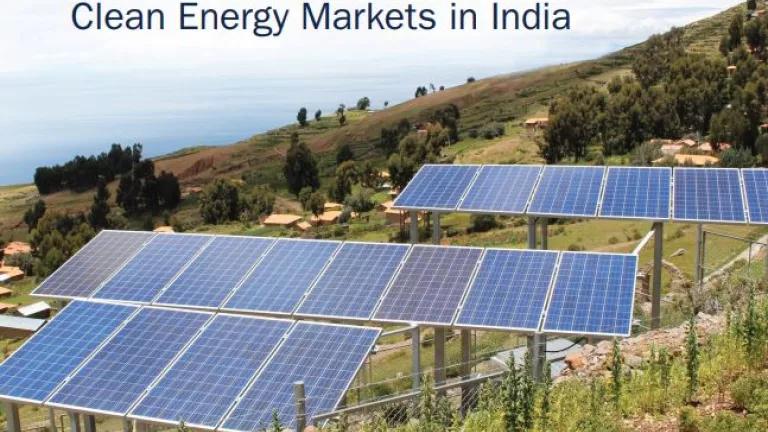
Co-authored with Poonam Sandhu
Massive financial investment is needed in clean energy, transport and buildings to achieve climate goals, especially in emerging countries, such as India. The International Energy Agency projects that $1 trillion of annual investment is required through 2050 to reach the Paris targets and much more is needed to keep the warming below the 1.5ºC threshold as warned by the IPCC. Around the world, “green banks” are emerging as solutions to grow green infrastructure markets.
Leaders from developed and developing countries from Asia, Africa, the Middle East and Latin America gathered for the Green Bank Design Summit. Over 20 developing countries representing 27% of global GDP and 44% of global carbon emissions came together to design and set up green finance institutions to catalyze low-carbon and climate resilient investments in emerging markets. Over 100 senior representatives spanning the landscape of emerging market governments, public finance institutions, private banks, philanthropies, expert organizations kicked off a new global platform focused on country-driven, ongoing collaboration to accelerate green finance institutions in emerging markets.
The summit marked the first time that emerging markets considering the setup of green banks as an implementation strategy for the Paris Agreement came together at this scale. The summit also provided an opportunity for knowledge exchange among countries with existing green banks from Australia, the United Kingdom, United States and elsewhere.
Green Windows in India
A major topic during the summit was on the Indian market and deploying innovative financing tools, such as “green windows,” that will grow investment for renewables, especially for underserved and emerging technologies, such as rooftop solar and battery storage technologies. The Indian Renewable Energy Development Agency (IREDA)’s immediate past Chairman and Managing Director, K.S. Popli participated in the summit. During the session on “Green Bank Clinic and Individualized Action Plans Clinic for Countries,” Mr. Popli and participants discussed the development of green windows in India. The Ministry of New and Renewable Energy (MNRE) and IREDA have been working to NRDC and our partners the Council for Energy, Environment and Water (CEEW) on developing green windows in India. The group discussed the institutional design and structure, financial instruments and products, sources of capitalization, and technical assistance and capacity building.
Green windows are catalytic financing tools that can jumpstart the clean energy expansion in India. These solutions could attract much needed low-cost finance for clean energy projects and open the market to India’s huge clean energy potential, while also helping achieve climate goals. Catalytic finance and new tools, such as green windows can help grow clean energy markets to power the growing economy, as discussed in our report Clean Energy for All, Framework for Catalytic Finance for Underserved Clean Energy Markets in India.
“Green windows and what they mean for clean energy advancement in India has come at an opportune time. It was valuable to collaborate with strong knowledge partners like NRDC and CEEW and we look forward to working together to unleash attractive finance for clean energy so that India can achieve its targets,” said Mr. Popli.
Key Takeaways from the Green Bank Design Summit
Our colleague Douglass Sims summarized the key takeaways from the summit:
- There is tremendous interest in catalytic finance in regions around the world and among public and private international financial institutions. International climate finance providers support the green bank concepts as a critical country-led actor for implementing their climate targets under the Paris Agreement.
- There is no single institutional form for a green bank. There are development banks, commercial banks, and investment banks all pursuing complementary green strategies. Sometimes a new institution or institutions is the best approach. Other times, adapting existing institutions to have green windows works better.
- Faster progress can be made by institutions from around the world working together in a peer learning, collaborative format.
NRDC finance experts Douglass Sims, Poonam Sandhu, among others participated in the summit, providing inputs on innovative ways to attract needed financing - enough to support India’s renewable energy targets, including 100 gigawatts (GW) by 2022 and beyond. The potential for India to become the largest clean energy market in the world is real and now. The summit highlighted that potential to the world and the financing solutions needed to achieve it.
India’s progress on renewable energy has been remarkable. At the same time, to achieve India’s clean energy targets requires catalytic finance to infuse capital where it is needed the most. India’s renewable energy ambitions and climate commitments are counting on it.
Clean Energy for All: Framework for Catalytic Finance for Underserved Clean Energy Markets in India
Authors’ Update:
This blog post has been modified to clarify the Mr. K.S. Popli is the immediate past Chairman and Managing Director of the Indian Renewable Energy Development Agency. Mr. Popli held this posting from 2014 to 2019.
Mr. Manish Chourasia, Managing Director, TataCleantech Capital also discussed the India market and provided important private sector perspectives as one of the world’s very first pure green private sector financial institutions.